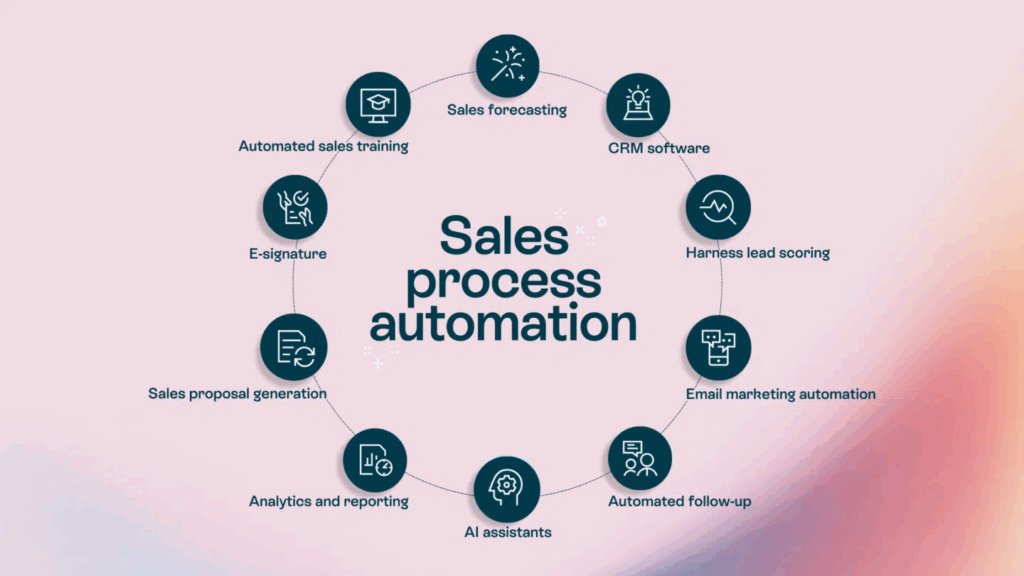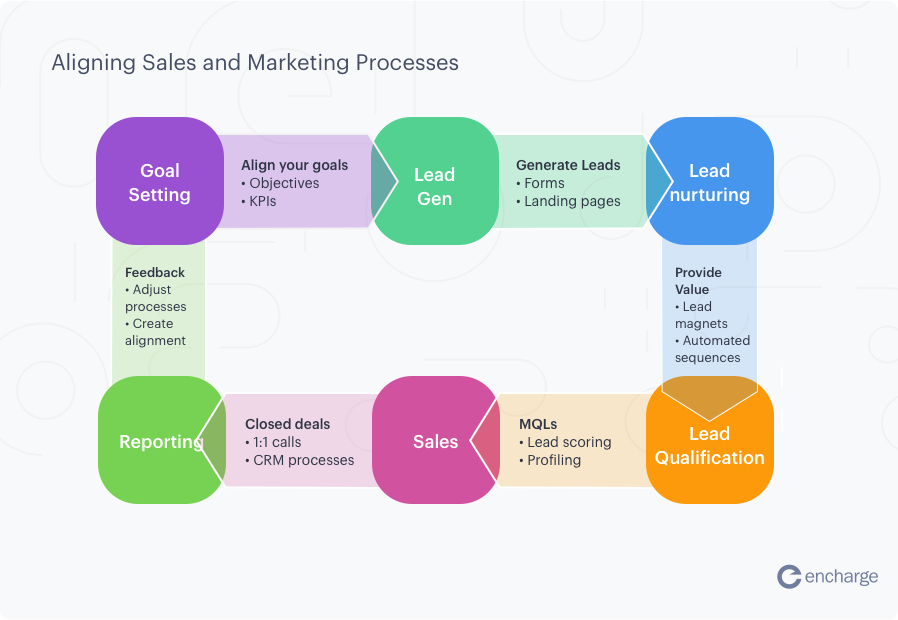How Sales Automation Drives Revenue Growth
Sales teams face enormous pressure to deliver results. They are expected to manage larger pipelines, move deals through the funnel quickly, and deliver personalized communication to every prospect. Yet much of their day is consumed by manual work like logging calls, updating CRM records, sending follow-up emails, and scheduling meetings. These repetitive tasks slow down selling time and make it harder to scale.
By automating administrative tasks and providing real-time insights, sales automation tools enable teams to operate more efficiently, close deals faster, and ultimately increase revenue. This article explores what sales automation tools are, why they matter for growth, the key benefits, common use cases, and best practices for implementation.
Quick Takeaways
- Sales automation tools free reps from manual work so they can focus on closing deals.
- Automated lead scoring, routing, and follow-ups speed up sales cycles.
- Accurate, real-time data improves pipeline visibility and forecasting.
- Personalized outreach at scale boosts engagement and conversions.
- Aligning sales and marketing through automation strengthens revenue growth.
What Are Sales Automation Tools?
Sales automation tools are software solutions designed to handle repetitive tasks within the sales cycle. Instead of spending hours on manual activities like data entry or sending reminders, sales reps can rely on automation to keep processes moving.
These tools typically integrate with customer relationship management (CRM) systems, marketing automation platforms, and communication tools. They help manage lead scoring, follow-up sequences, meeting scheduling, and even proposal generation.

The goal is to free sales reps from administrative work so they can dedicate more time to building relationships and closing deals.
Why Sales Automation Matters for Revenue Growth
Sales automation tools directly impact revenue growth by making the sales cycle faster, more consistent, and more effective. Without automation, sales teams risk losing leads to delayed follow-ups, working with inaccurate data, or missing opportunities due to inefficient processes.
Automation eliminates these roadblocks. It ensures every qualified lead receives timely outreach, pipeline stages are updated automatically, and opportunities are prioritized based on data-driven insights.
For buyers, this translates into faster responses, more relevant communication, and a smoother journey from prospect to customer. For sales organizations, the result is higher conversion rates and stronger revenue performance.
Key Benefits of Sales Automation Tools
Increased Productivity
Administrative work consumes a large share of a sales rep’s time. With automation handling data entry, meeting reminders, and follow-up emails, reps can focus their energy on building relationships and advancing deals.
Faster Sales Cycles
Automation keeps deals moving by sending reminders, follow-ups, and scheduling prompts at exactly the right time. Instead of waiting for manual outreach, prospects receive consistent engagement that shortens the overall cycle.
Better Lead Management
Sales automation tools ensure leads are scored and routed quickly based on fit and behavior. High-value prospects go directly to the right representative, while lower-priority leads can be nurtured until they are ready to engage. This prioritization helps teams focus on the opportunities most likely to convert.
Improved Data Accuracy
Manual updates often result in incomplete or inaccurate CRM records. Automation ensures that data is entered consistently and in real time, giving leadership reliable visibility into the pipeline. Accurate data improves forecasting and eliminates costly mistakes.
Scalable Personalization
Buyers expect outreach tailored to their needs, but it is unrealistic for reps to customize every message manually. Sales automation tools personalize subject lines, email templates, and recommendations based on behavior and past interactions at scale.
Common Use Cases for Sales Automation
- Lead Scoring and Routing: Automation evaluates leads based on criteria like engagement, demographics, and behavior, assigning them to the right rep without delay.
- Email Sequences and Follow-ups: Automated campaigns ensure every lead receives timely communication triggered by specific actions, such as downloading content or attending a webinar.
- Meeting Scheduling: Calendar integrations eliminate the back-and-forth of setting appointments, making scheduling seamless.
- Pipeline Tracking and Forecasting: Real-time pipeline updates improve visibility and accuracy in forecasting revenue outcomes.
- Proposal and Contract Automation: Automating proposal generation and approvals reduces bottlenecks and keeps deals moving toward closure.
How Sales Automation Tools Align Sales and Marketing
One of the most powerful outcomes of sales automation is improved alignment between sales and marketing teams. Marketing-qualified leads (MQLs) can flow directly into the sales pipeline, where automation tools score and route them instantly.
This seamless handoff ensures no lead is lost in transition. Closed-loop reporting also provides both teams with clear visibility into which campaigns generate revenue, allowing for better resource allocation and future planning. By aligning data and processes, automation eliminates silos and ensures both sales and marketing work toward the same revenue goals.
Automation also supports alignment across every stage of the buyer journey. The diagram below illustrates how connected processes between sales and marketing reinforce consistent revenue growth, with automation keeping each stage efficient and synchronized.

Implementation Best Practices
Define Goals Clearly
Set measurable objectives for automation, such as reducing sales cycle length, increasing conversion rates, or improving rep productivity. Clear goals provide direction and help measure success.
Choose Tools that Integrate with CRM
Select automation tools that connect easily with your existing CRM and marketing platforms. Integration reduces silos and ensures teams work with a single source of truth.
Start with High-Impact Areas
Begin with use cases that deliver immediate value, such as automating follow-ups or lead routing. Once teams see results, expand automation to more advanced workflows.
Train Sales Teams Thoroughly
Sales automation works best when reps understand its value. Provide training to show how automation supports their work rather than replaces it. Adoption improves when teams see the benefits firsthand.
Measure ROI Continuously
Track time saved, conversion rates, and pipeline velocity to evaluate the effectiveness of automation. Regular measurement ensures the investment delivers ongoing value.
Challenges and Considerations
Despite its benefits, sales automation is not without risks. Over-automation can make outreach feel robotic and impersonal. Data quality remains critical; Poor data undermines automation accuracy. Finally, change management is essential. Sales reps may resist new tools if they feel overwhelmed or believe automation threatens their role. Addressing these challenges early increases the likelihood of success.
The Future of Sales Automation
Sales automation is evolving rapidly. Artificial intelligence is increasingly integrated into automation platforms, providing predictive lead scoring, dynamic content personalization, and real-time coaching. Conversational tools like chatbots are extending automation into early-stage prospecting.
Looking forward, unified platforms that blend sales, marketing, and customer success automation will become the norm, creating seamless experiences across the buyer journey. Organizations that embrace this future will be better positioned to achieve consistent revenue growth.
Maximize Sales Automation Impact Today with Televerde
Sales automation tools are essential for driving growth. By reducing manual work, improving lead management, and enabling scalable personalization, these tools give sales teams the speed and accuracy needed to succeed.
Organizations that adopt sales automation strategically will see faster sales cycles, higher conversion rates, and stronger revenue performance. The path forward is clear: Start with defined goals, implement tools that integrate with existing systems, and expand automation gradually to maximize impact.
Ready to accelerate revenue with smarter selling? Televerde’s sales automation solutions help your team close more deals, faster. Contact us to learn more.


